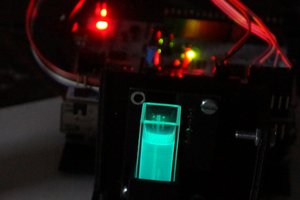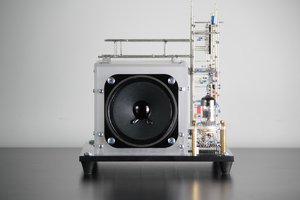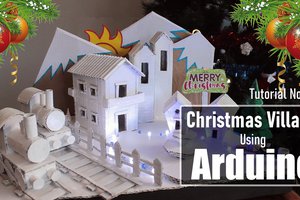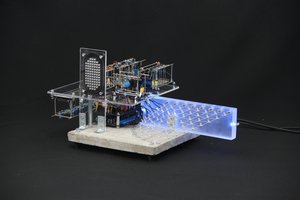The ESP32 is used as a dual oscillator, LED controller, and delay time modulator through a digital rheostat. The dual core ESP32 lets you handle the non-essential stuff on one core and the more timing dependent stuff on the other core, which comes in handy when you are dealing with audio rate frequencies. I power this with a unipolar +12V supply solely to get more headroom for the LM380 audio amplifier. Otherwise the rest of the circuitry is powered by +5V.
The acrylic glass is dimensioned at 3mm (mirror surface), 4mm (thin transparent walls), and 8mm (thick transparent walls), and was cut using a table saw, and then roughly sanded down on the edges with 60 grit sandpaper to diffuse the light coming from underneath. This is also the first time I tried to plan out the entire project ahead of time using Sketchup, from which I could print out a adequately accurate map for where to drill holes and temporarily tape it to the acrylic glass before drilling it with a drill press.

 esben rossel
esben rossel

 Hulk
Hulk